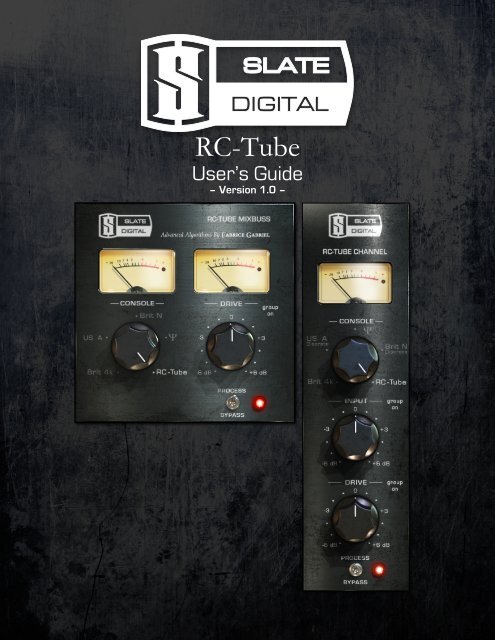

The Neve was almost too warm, rounding out the bottom end to where it sounded a bit too thick. I suppose I could have thickened it up if I had driven it harder, but this setting sounded the best, to me anyway. It seemed to give me the nicest balance of overall warmth and clarity. Surprisingly, I ended up choosing the Trident setting, with input levels set at +3 and the Drive setting at +2. Can save a lot of wasted time and money.As an offshoot of the current thread about the Slate VCC collection, I thought I'd experiment a bit and post a mix I did recently, using the Slate VCC on the 2-bus. But if, like me, your interest in engineering is a means to an end (rather than the end goal), then I think that all current daw have great quality mixing plugins. Not that there isn't an argument for developing the ability to hear these differences. Ultimately, I think that there is wisdom in the idea that 'If you can't hear it, you don't need it'. I also often use Wavearts' Trackplug, as I can pretty much do everything in that (Especially given the Pultec curve it offers). It's hard to beat that one-click instantiation (Still have my fingers crossed that Apple will save us from plugin menu diving, with a Bitwig-style browser). Despite owning some 3rd-party 'mojo', I normally just default to Logic's channel eq and built-on compressor. My workflow is as simple as possible these days.

Other companies, such as Brainworx go as far as to model difference in compnent tolerance, so that each instance, just like real hardware, sounds slightly different from the lasr.

As such, very 'musical' results can be achieved a lot quicker.Īlso, well-modelled plugins should include some of the 'mojo' that can only come from modelling the 'failings' of analogue gear i.e distortion etc. But in terms of workflow, often these plugins model equipment that was designed to offer very specific broad-stroke movements, with specific curves, around very specific, 'musical' frequencies. Even just having a slick gui can inspire use. The second is that I know my ears work and I know what I’m hearing and even if there are differences between these EQs, to my ears the differences are so small that they are actually negligible so what’s the point? Are we fooling ourselves? Does anyone actually think there’s any justification for having these 3 different EQs?Ī lot of the reason for people to choose plugins has to with workflow and inspiration. With this in mind, I’d like to know if anyone here actually hears significant differences between these EQs and if you think I should continue to try to learn to the differences. The first is that I feel a little bad about this because I feel that if the slate stuff is that good and really does give me access to digital versions of so many powerful tools then I should be learning to use them properly. Apparently the FG-A is good for percussive stuff because as you increase the gain of a bell, the Q gets narrower but I just don’t hear much of a difference when I test it out against the FG-N and FG-S. I’ve heard people talk about the differences between the Slate FG-N, FG-S and FG-A EQs and about how they are each good for different things but when I test this out for myself I just don’t hear it. I definitely hear some great things in some of the Slate Digital plugins (The high end in Revival for example is nice and smooth) but there are often times when I try out a few Slate EQs for example to see which one suits what I’m trying to do best (boosting a particular frequency by 4dB on each EQ) and I honestly hear vitrually no difference or sometimes no difference at all. I know the frequency spectrum quite well and know what each frequency sounds like. For context, I think my ears are pretty good at this stage.


 0 kommentar(er)
0 kommentar(er)
